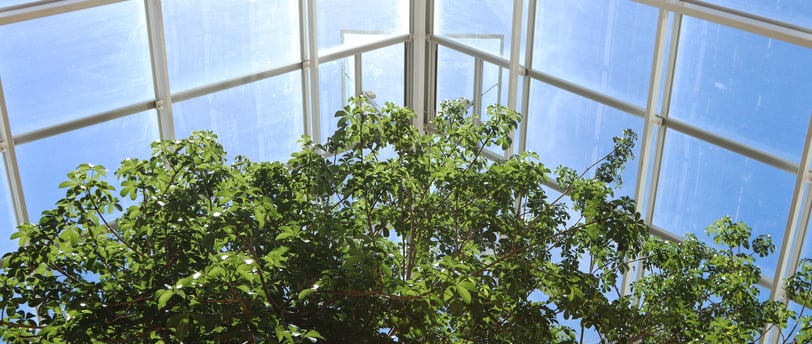Sustainable Architecture: Creating Green Buildings for a Better Future
SUSTAINABLITY


In the face of a growing climate crisis, sustainable architecture is emerging as a key solution for reducing environmental impact and promoting a greener future. By integrating environmentally responsible practices and technologies, architects are reimagining buildings to be efficient, functional, and harmonious with nature. Sustainable architecture not only mitigates climate change but also improves the health and well-being of those who live and work within its spaces.
This article delves into the principles of sustainable architecture, innovative design strategies, and its vital role in creating a more sustainable world.
1. What is Sustainable Architecture?
Sustainable architecture is the practice of designing and constructing buildings that minimize environmental impact throughout their lifecycle. It prioritizes:
Energy Efficiency: Using less energy to operate.
Resource Conservation: Utilizing renewable and recyclable materials.
Environmental Integration: Designing buildings that blend with and enhance their natural surroundings.
Human Well-Being: Creating healthy indoor environments through natural light, air quality, and green spaces.
2. Principles of Sustainable Architecture
a. Energy Efficiency
Buildings account for nearly 40% of global energy consumption. Sustainable architecture reduces this by:
Incorporating Passive Design: Utilizing natural ventilation, shading, and insulation to maintain comfortable temperatures.
Using Renewable Energy: Installing solar panels, wind turbines, or geothermal systems.
Optimizing Building Systems: Leveraging energy-efficient HVAC, lighting, and appliances.
b. Sustainable Materials
Traditional construction relies heavily on energy-intensive materials like concrete and steel. Sustainable alternatives include:
Recycled Materials: Reclaimed wood, recycled metal, and glass.
Renewable Resources: Bamboo, cork, and sustainably harvested timber.
Low-Impact Innovations: Materials like rammed earth and cross-laminated timber.
c. Water Conservation
Green buildings integrate water-saving systems such as:
Rainwater Harvesting: Collecting rainwater for irrigation and non-potable uses.
Low-Flow Fixtures: Reducing water waste in plumbing.
Greywater Recycling: Reusing wastewater for landscaping or flushing.
d. Indoor Environmental Quality
Healthy buildings improve occupants’ well-being through:
Natural Lighting: Large windows and skylights to maximize daylight.
Air Purification: Using plants, ventilation systems, and non-toxic materials.
Acoustic Comfort: Designing spaces to minimize noise pollution.
e. Biophilic Design
This principle emphasizes connecting people to nature by integrating green roofs, vertical gardens, and natural materials into building design.
3. Innovations in Sustainable Architecture
a. Green Roofs and Living Walls
These features reduce heat absorption, improve insulation, and enhance biodiversity in urban areas.
Example: Bosco Verticale in Milan, Italy, incorporates vertical gardens to purify air and provide natural cooling.
b. Net-Zero Energy Buildings
Net-zero buildings produce as much energy as they consume through renewable energy systems and ultra-efficient design.
Example: The Bullitt Center in Seattle, USA, generates all its energy from solar panels.
c. Modular and Prefabricated Construction
Prefabricated components reduce construction waste, save time, and often use sustainable materials.
Example: The Ilima Primary School in the Congo, built with modular, sustainable materials, demonstrates low-impact construction.
d. Smart Building Technologies
Smart systems optimize energy use by automating lighting, heating, and cooling based on occupancy and weather patterns.
Example: Edge in Amsterdam, Netherlands, is one of the world’s smartest and most energy-efficient office buildings.
4. The Role of Sustainable Architecture in Climate Action
a. Reducing Carbon Footprint
Construction and building operations contribute significantly to greenhouse gas emissions. Sustainable architecture combats this by:
Reducing operational energy use.
Favoring carbon-neutral or negative construction materials.
b. Climate Adaptation
Green buildings are designed to withstand and adapt to climate-related challenges such as extreme heat, flooding, and storms.
Example: Floating houses in the Netherlands address rising sea levels.
c. Urban Cooling
Features like green roofs and reflective materials mitigate the urban heat island effect, keeping cities cooler.
5. Challenges in Implementing Sustainable Architecture
a. High Initial Costs
While sustainable buildings often cost more upfront, their long-term savings in energy and maintenance make them cost-effective over time.
b. Limited Awareness
Many developers and consumers are unaware of the benefits of green architecture. Increased education and incentives can address this.
c. Regulatory Barriers
Complex building codes and a lack of standardization can hinder green building projects. Advocacy for streamlined policies is essential.
6. Case Studies: Leading Examples of Sustainable Architecture
a. The Crystal, London, UK
A model of sustainability, this building features solar panels, rainwater harvesting, and energy-efficient systems.
b. Earthship Biotecture, Taos, USA
These self-sufficient homes are made of recycled materials and rely on renewable energy and water systems.
c. One Central Park, Sydney, Australia
With green walls and integrated solar energy systems, this residential building combines beauty and sustainability.
7. The Future of Sustainable Architecture
The field is rapidly evolving, with exciting advancements on the horizon:
Circular Construction: Buildings designed for easy disassembly and reuse of materials.
Advanced Biomaterials: Innovations like mycelium (mushroom-based) bricks and algae bioreactors.
Energy-Positive Buildings: Structures that generate surplus energy for surrounding areas.
As urbanization accelerates, sustainable architecture will play a critical role in shaping eco-friendly cities that benefit both people and the planet.
Conclusion
Sustainable architecture represents a shift toward designing not just for aesthetics and function but for long-term environmental and social impact. By embracing energy efficiency, green technologies, and community well-being, architects can create spaces that are as kind to people as they are to the planet.
Building green isn’t just a trend—it’s a necessity. For a brighter, healthier future, sustainable architecture must become the cornerstone of modern design.

